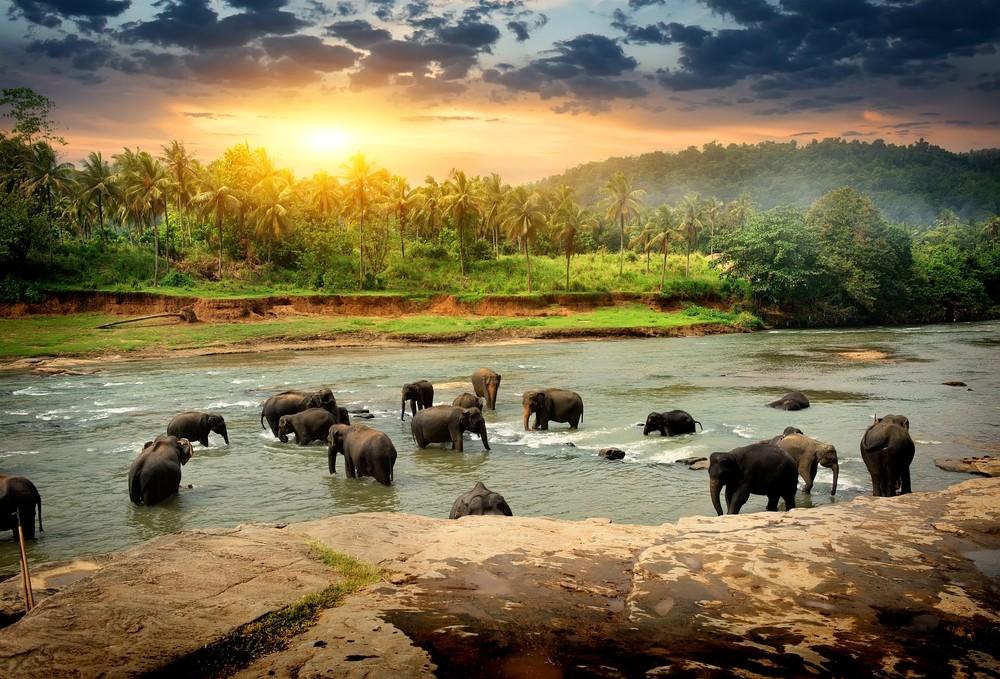The sun flashes between the roof of the palm trees, a gentle murmur can be heard from the nearby sea and the cry of a monkey from nearby. Sri Lanka is an exotic paradise for dreaming, and the vervet monkeys are called “hat monkeys” here because of their “hairstyle” and middle parting. They populate the country’s rainforests and feed mainly on fruits, of which there are many in Sri Lanka. Sri Lanka is an island nation south of the Indian subcontinent, and the country has been overshadowed by a bloody civil war between Tamils and Sinhalese for a long time. For almost ten years, the large island with its numerous ethnic groups has been pacified, and people hope that this peace will not be fragile in the future. Sri Lanka has woken up from a nightmare and has very willingly opened up to tourism, because this is an important source of income for the country, which is otherwise financed by a plantation economy with the production of rubber and tea.

Sri Lanka is an animal and cultural paradise in equal measure. The island is manageable and hardly larger than the German state of Bavaria. It is crisscrossed by a species-rich jungle and green hills, where hard-working hands are needed on the tea plantations. The most beautiful photo experiences on a round trip always occur when elephants are looking for refreshment in one of the many quiet lakes on the island. The pachyderms are slightly darker than the Indian elephants and only a few males have tusks, which largely protects them from ivory poachers.
The national parks enjoy the special attention of the Department of Wildlife Conservation and are the pride of the country. In the Udawalawe Reserve, holidaymakers go on safari in an off-road vehicle – or on foot accompanied by experienced rangers. Only the leopards have survived the era of wars in Sri Lanka and are multiplying magnificently. Especially in Yala National Park, where there is said to be the largest population of spotted leopard beauties and where there is a good chance of getting them in front of the camera. Ferns grow tree-high in some parts of the national parks, and they are the refuge of crocodiles, mongooses, monkeys and numerous bird species.

Sri Lanka has many faces and the island is both wild and beautiful. And that’s why we speak of the “Pearl of the Indian Ocean”, which is not taken from the brochures of international tourism, but is a very old predicate. As early as the Middle Ages, Sri Lanka was given this nickname by sailors because they particularly liked the white beaches lined with palm trees. The natural healing method Ayurveda was born in Sri Lanka and is practiced in many hotels and resorts on the island.
The picturesque beaches at Kikkaduwa and Beruwala are also so popular with holidaymakers because the beaches there slope very gently into the sea and because snorkelers and divers are taken with the coral reefs. “Trinco” is the name given by the inhabitants of Sri Lanka to a coastal town in the northeast. It is the short form for Trincomalee, which can be translated as “temple” and is deeply rooted in the consciousness of the islanders. According to legend, a huge temple once stood here under the rule of the Tamils – the largest in all of Asia. But so far, no one has found the remains of the so-called “Tirukoneswaram”, and no one knows whether the temple was destroyed by the Portuguese conquerors or whether it was the victim of natural forces.
The roads in Sri Lanka are mostly very winding, but behind every serpentine a new miracle can open up. The island, which was still marked on the maps as “Ceylon” some time ago, is full of secrets and surprises and is a region for experienced globetrotters that wants to be rediscovered after the past of a civil war.
Travel information Sri Lanka
| Capital | de facto: Colombo de jure: Sri Jayawardenepura Seat of government Sri Jayawardenepura |
|---|---|
| Form of government | Republic Presidential system |
| Currency | Sri Lankan Rupee (LKR) |
| Area | approx. 65,610 km² |
| Population | approx. 20,877,000 (2017) |
| Languages | Sinhala, Tamil |
| Electricity grid | 230 volts, 50 Hz |
| Area code | +94 |
| Time zone | UTC+5:30 |


